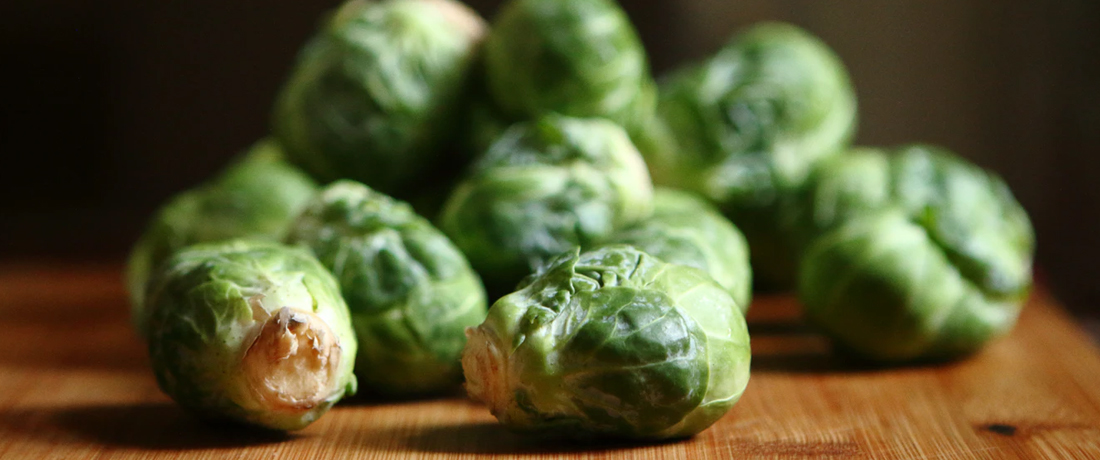
 Important note about plant availability. Important note about plant availability.There are hundreds of factsheets on our website provided for your information. Not all plants will be available at all times throughout the year. To confirm availability please call (03) 8850 3030 and ask for the nursery. |
Brassica oleracea var. gemmifera. Brassicaeae
Brussels Sprout – yep, that’s right, they’re Brussels Sprout not Brussel Sprouts – are one of the few vegetables that are almost guaranteed to get a strong reaction from people. Unfortunately, even those that have never tried these dear little cabbage-like balls are often put-off by the negativity surrounding them, even though they’re a superfood.
Many of you can’t bear the thought of eating them, whereas others are happy to eat them without any arguments whatsoever, just as we would Broccoli or Cauliflower. Interestingly enough, it has been scientifically proven that there is a genetic reason for this – so maybe you shouldn’t force your family members to eat them, just in case they haven’t inherited your Brussels Sprout-loving gene. For further information on this genetic reason, take a look at “Brussels Sprout TAS2R38” on the web.
Although it’s possible that they were grown as far back as1587, Brussels Sprouts were first recorded as being eaten in a region of Belgium back in 1750, hence their name. They had reached both England and France by 1800, and their popularity in Australia peaked by about 1949. Even though they’ve since become much less popular, the humble Brussels Sprout is due for a comeback.
Brussels sprouts grow in full sun to part shade. They do well in a range of soil types, with slightly heavier soils providing the best results. This is because heavier soils provide better purchase for their roots to grab onto, anchoring them to the ground as they become laden with sprouts later in the season and are at risk of toppling over. They are moderate feeders, so add manure and compost to the soil a couple of weeks prior to planting. Don’t go too heavy with fertilisers, especially those that are high in nitrogen, as this can result in Brussels Sprout blow-out.
To grow sprouts successfully, you need to get the timing right. Normally, most people think that it’s best to plant them at the same time as the rest of their winter vegies. However, this is far too late for them to go in. To get the best flavour and to prevent the sprouts from blowing-out, it is best to start harvesting them after the first frosts (late autumn and early winter). As sprouts take about 100 days to produce when growing from seedlings, you need to get them into the ground almost at the height of summer, or in very early autumn at the latest.
This early planting can create some challenges, especially trying to keep the newly planted seedlings alive as the hot summer sun beats down. Frequent watering is critical, as is protection from insect and pest attack. During autumn, the Cabbage White Butterfly can be problematic – an insect exclusion net, or spraying them with Dipel or a similar BT insecticide, will help minimise the damage.
As the plant matures, remove any yellow leaves near the base and any leaves around the developing sprout buds. Finally, as the plant nears harvesting time, nip the growing tip off to encourage energy towards the maturing sprout buds, and then harvest the sprouts from the base once they are between 20 and 25 mm in diameter.
